When you think about construction in Stoney Creek, Ontario, soil stabilization might not be the first thing that comes to mind, yet it’s essential for any project’s success. You’ll find that addressing issues like expansive clay soils and poor compaction can greatly impact the durability and safety of structures. Techniques such as soil compaction, chemical additives, and mechanical reinforcement are commonly used to enhance structural integrity. Curious about how these methods shape the community and what local experts have to say? Let’s explore the critical role soil stabilization plays in building a resilient Stoney Creek.
Importance of Soil Stabilization
In Stoney Creek, soil stabilization is essential for preventing erosion and ensuring the structural integrity of buildings. When you invest in proper soil stabilization techniques, you’re not just protecting your property; you’re also contributing to the community’s overall safety and durability.
Soil stability is the foundation of any construction project, and without it, the structural strength of your buildings could be compromised. By focusing on soil stability, you’re helping to improve the load-bearing capacity of the soil, making it more capable of supporting heavy structures. This means fewer worries about foundation settlement or structural damage over time.
Techniques like chemical stabilization, mechanical compaction, and soil reinforcement are essential tools in your arsenal to achieve this. They ensure that the ground beneath your feet remains steadfast, providing a sense of security for you and your neighbors.
Effective soil stabilization doesn’t just benefit individual properties; it promotes the long-term durability and sustainability of Stoney Creek’s infrastructure. When everyone takes part in these practices, it fosters a stronger, more resilient community.
Common Soil Issues
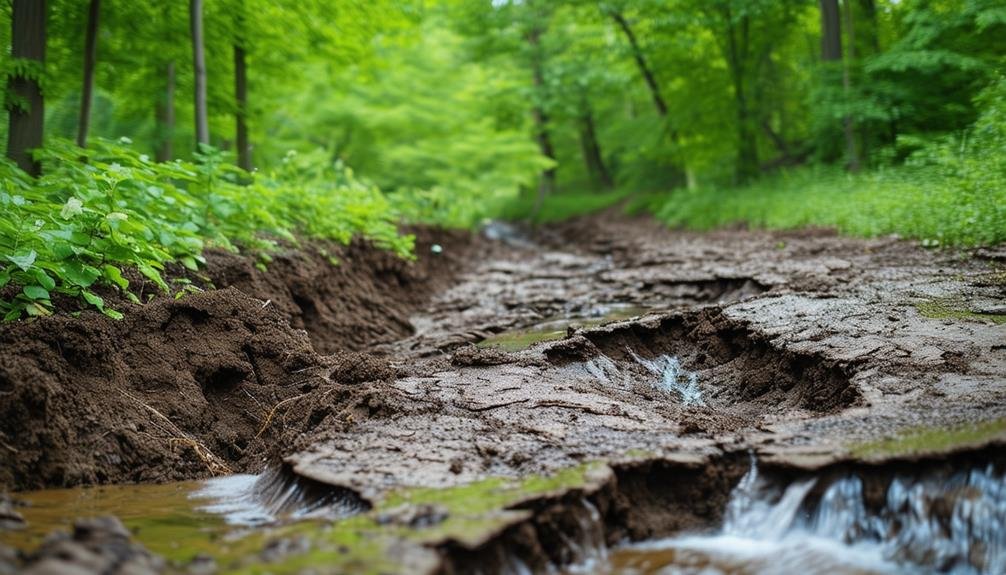
Encountering common soil issues in Stoney Creek, like expansive clay soils and poor compaction, can markedly impact the stability and longevity of construction projects. Expansive clay soils cause foundation movement and cracking, jeopardizing the structural integrity of buildings. Poor compaction and high organic material content lead to settlement and uneven surfaces, making it essential to address these concerns for long-term stability.
One of the main challenges also involves soil erosion due to water runoff and inadequate drainage. This can destabilize slopes and embankments, necessitating effective moisture management. Additionally, soil contamination from nearby industrial activities or improper waste disposal poses significant environmental and health risks. By understanding these issues, you can take proactive steps towards preventing settlement and ensuring the durability of your projects.
Here’s a quick glance at common soil problems and their impacts:
| Soil Issue | Impact |
|---|---|
| Expansive Clay Soils | Foundation movement and cracking |
| Poor Soil Compaction | Settlement and uneven surfaces |
| Soil Erosion | Destabilized slopes and embankments |
| Soil Contamination | Environmental and health risks |
Addressing these problems through proper methods will not only boost construction durability but also foster a sense of belonging and safety in your community.
Techniques for Stabilization
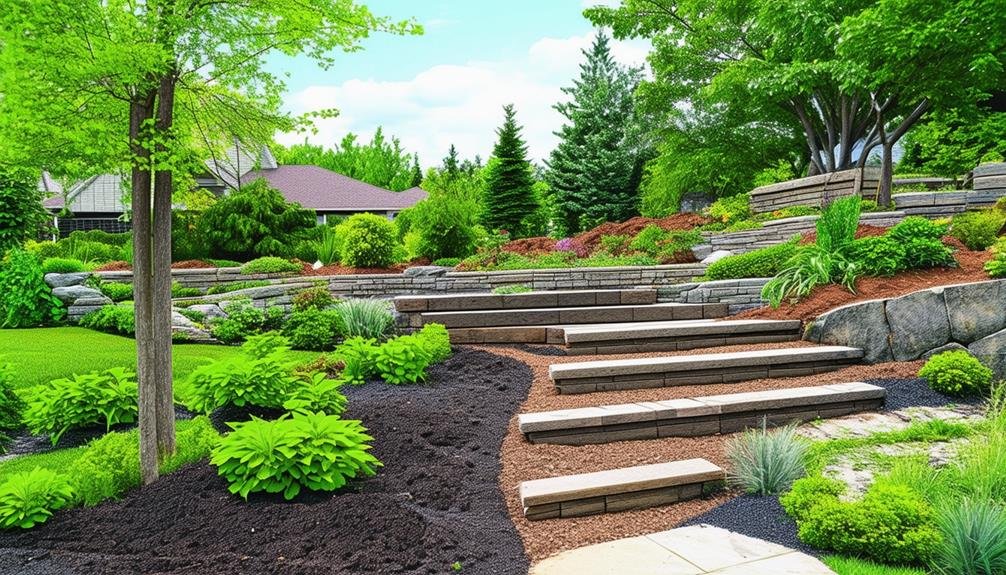
To tackle the common soil issues in Stoney Creek, effective soil stabilization techniques like compaction, chemical additives, and mechanical reinforcement are employed. When you face unstable soil, one of the first steps is soil compaction. This method densifies the soil, boosting its load-bearing capacity and reducing settlement risks. You’ll often see heavy machinery like rollers and compactors hard at work to achieve this.
Next, chemical stabilization comes into play. By integrating chemical additives such as lime or cement into the soil, you can greatly improve its properties. This technique helps to bind the soil particles together, enhancing strength and resistance to water infiltration.
Mechanical reinforcement techniques are equally important. Installing geogrids, for instance, provides a robust framework that supports soil structures. Geogrid installation is a popular choice in Stoney Creek because it effectively distributes loads and minimizes deformation.
Additionally, materials like geotextiles or soil nails are used to reinforce and stabilize the soil further.
Benefits for Construction Projects

By focusing on soil stabilization in Stoney Creek, you’ll greatly enhance the structural integrity of your construction projects. This method not only boosts load-bearing capacity but also offers cost-effective solutions by reducing future repair needs.
Ensuring stabilized soil means your projects will stand the test of time.
Enhanced Structural Integrity
Utilizing soil stabilization techniques in Stoney Creek guarantees that your construction projects benefit from enhanced structural integrity, providing a solid and durable foundation. By improving soil strength, these methods ensure increased durability and improved safety for your buildings and infrastructure. You’re not just building structures; you’re creating lasting landmarks that stand the test of time.
Imagine the peace of mind knowing that your project won’t suffer from settling or foundation issues. Stabilized soil minimizes the risk of erosion and soil movement, which means your structures are less likely to sustain damage. This is essential for the long-term stability and safety of essential constructions like roads and bridges.
When you invest in soil stabilization, you’re contributing to a safer, more stable community in Stoney Creek.
The techniques used, such as additives, compaction, and reinforcement, are designed to optimize soil properties specifically for construction needs. These methods ensure that the ground beneath your project is as resilient as possible.
Cost-Effective Solutions
Investing in soil stabilization in Stoney Creek greatly reduces construction costs by enhancing soil strength and minimizing settlement risks. When you prioritize soil stabilization, you’re taking a proactive step towards ensuring the long-term success of your construction project.
Enhanced load-bearing capacity means fewer foundation issues and less structural damage, which translates to significant savings in both time and money.
By adopting sustainable practices, you’re not only protecting the environment but also benefiting from improved project efficiency. Stabilized soil creates a reliable base for buildings, roads, and other structures, ensuring they stand the test of time. This approach reduces the need for extensive repairs and maintenance down the line, allowing you to allocate resources more effectively.
Moreover, soil stabilization techniques contribute to safer construction environments. When your project site has a stable foundation, you minimize the risk of accidents and delays, fostering a sense of safety and reliability among your team.
In Stoney Creek, where community and belonging are highly valued, these benefits resonate deeply. By incorporating soil stabilization into your construction plans, you’re not just building structures; you’re building trust and long-lasting relationships within the community.
Environmental Impact
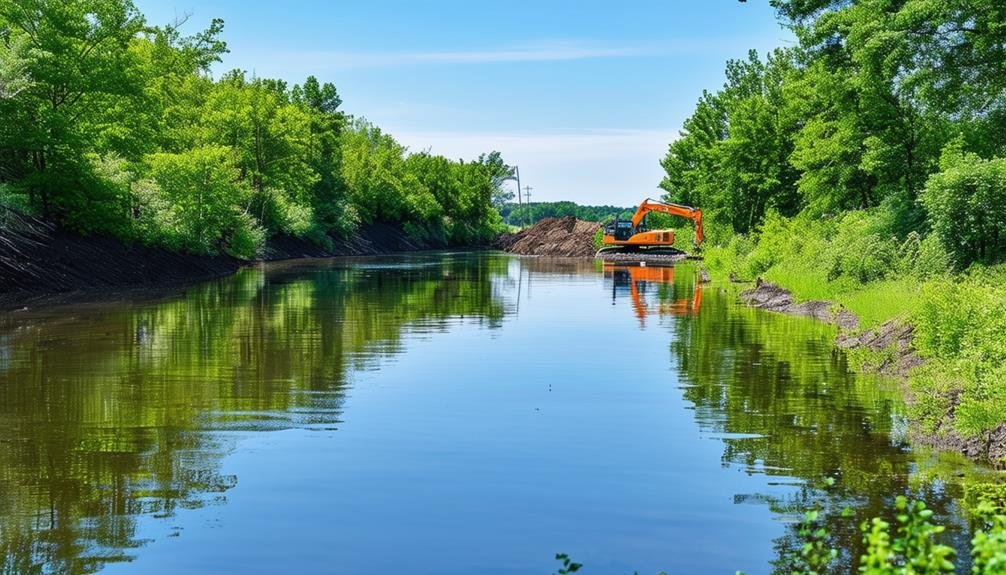
You’ll find that soil stabilization in Stoney Creek greatly reduces erosion risks, safeguarding the environment.
These practices enhance soil quality, maintaining its structure and fertility.
Consequently, you’ll also see improvements in local ecosystems and biodiversity.
Reduced Erosion Risks
By strengthening the soil’s cohesion, soil stabilization in Stoney Creek greatly reduces erosion risks, safeguarding both the environment and local infrastructure. You can see the benefits in erosion prevention and environmental protection firsthand.
When the soil’s strength is enhanced, it effectively prevents soil displacement and loss, which means less sediment runoff into our precious water bodies. This not only preserves the natural habitat for plants and animals but also keeps our landscapes intact.
Imagine walking through Stoney Creek and knowing that the beautiful scenery you enjoy is safeguarded. Soil strength and landscape preservation go hand in hand here. Stabilized soil can withstand elements like rain and wind, maintaining the integrity of our surroundings and preventing erosion-related damage.
This protection extends to our homes and infrastructure, reducing the risk of landslides and slope failures.
Enhanced Soil Quality
By implementing effective soil stabilization techniques, you can significantly enhance soil quality in Stoney Creek, resulting in numerous environmental benefits. Improved sustainability is a key outcome of these methods, as stabilized soil reduces erosion and preserves natural resources. This means you’re not just safeguarding the ground beneath your feet but also contributing to a healthier ecosystem for everyone.
Stabilization methods, whether through chemical additives or mechanical means, bolster soil strength, making it less susceptible to shifting and erosion. This isn’t just beneficial for the environment; it also means that the infrastructure built on this land is more durable and requires less maintenance. When soil is strong and stable, roads, buildings, and other structures have a solid foundation, reducing the need for frequent repairs and thereby cutting down on resource use and costs.
In Stoney Creek, adopting these techniques ensures that construction projects aren’t only successful but also environmentally mindful. You play an essential role in this community by supporting sustainable practices that protect our natural landscape. By focusing on enhanced soil quality, we all contribute to a more resilient and sustainable future for Stoney Creek.
Local Experts in Stoney Creek
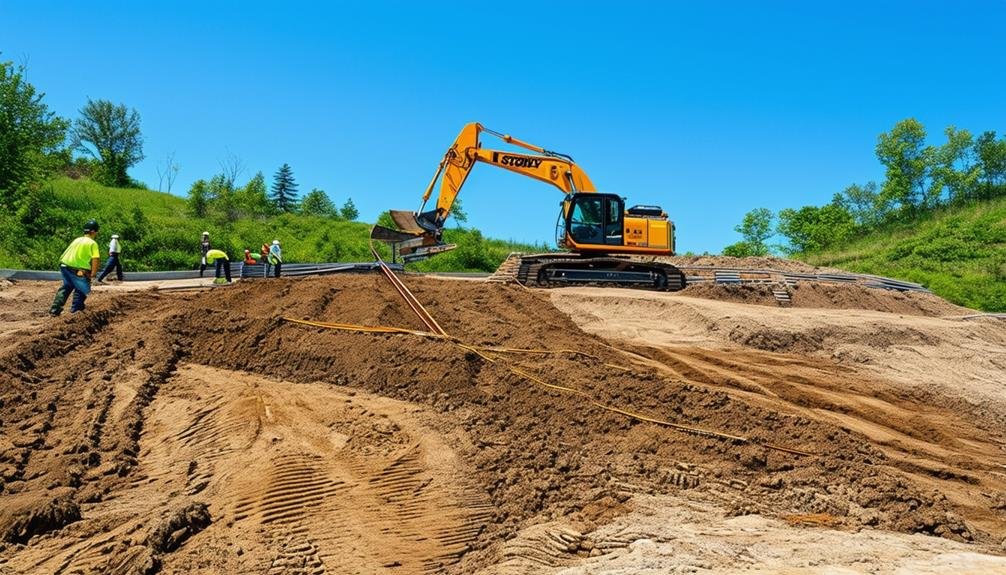
Hiring local experts in Stoney Creek guarantees you receive the best soil stabilization solutions tailored to the area’s unique conditions. These professionals bring a wealth of experience and understanding of local soil types, ensuring that the methods they employ are the most effective.
By leveraging expert recommendations and thorough soil testing, they can pinpoint the most suitable stabilization techniques, whether it’s soil grouting, chemical stabilization, or geotextiles. This localized approach means your project benefits from solutions that directly address the specific challenges and characteristics of Stoney Creek’s soil.
When you work with these local experts, you’ll also receive guidance that aligns with industry standards, ensuring your project is both safe and compliant. They offer thorough project consultation, taking the time to discuss your needs and propose stabilization methods that enhance the soil’s load-bearing capacity.
This helps prevent erosion and ensures the long-term durability and stability of your structures.
Future Trends in Soil Stabilization
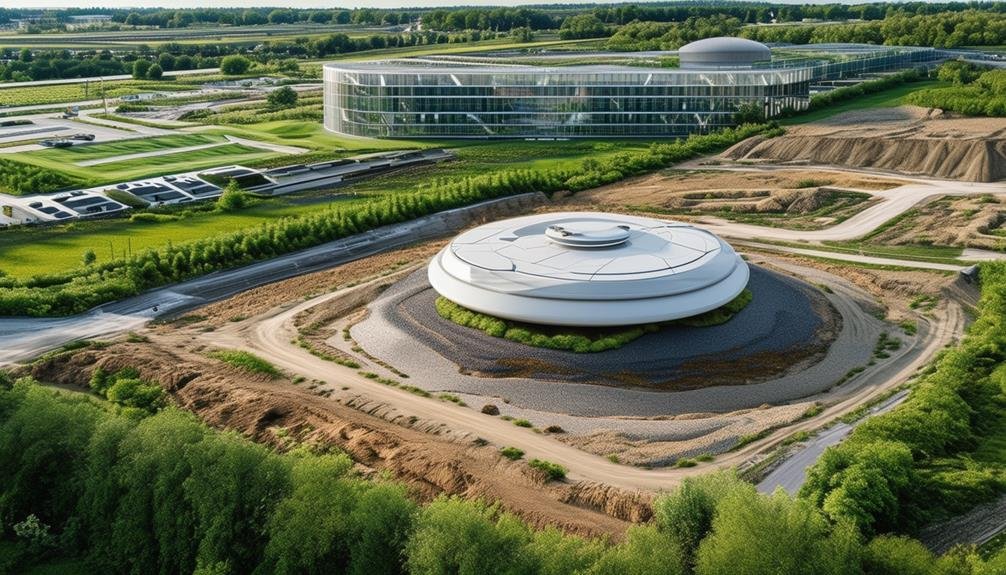
As we look to the future of soil stabilization in Stoney Creek, sustainable and innovative techniques are set to transform the industry.
You’ll see a significant shift towards environmentally friendly solutions that not only enhance soil strength and durability but also reduce the environmental impact. Innovative technologies, such as bio-cementation and geopolymer stabilization, are emerging as game-changers. These methods use natural processes and materials to stabilize the soil, making them a perfect fit for the eco-conscious community of Stoney Creek.
Research and development efforts are increasingly focused on bio-based soil stabilizers, aiming to create solutions that are both effective and sustainable.
Imagine using recycled materials in soil stabilization processes—it’s not just a possibility, but a growing reality in Stoney Creek. This approach promotes resource efficiency, aligning with the community’s values of sustainability and environmental stewardship.
Frequently Asked Questions
What Is the Average Cost of Soil Stabilization in Stoney Creek?
When considering contractor selection and soil testing, you’re looking at an average cost of $5 to $15 per square foot. Don’t forget, choosing the right contractor makes all the difference in ensuring quality and community trust.
How Long Does the Soil Stabilization Process Typically Take?
You’re probably wondering how long the soil stabilization process takes. Typically, it takes a few weeks. Local contractors guarantee minimal environmental impact, so you’ll feel good about the work being done in your community.
Are There Any Government Grants Available for Soil Stabilization Projects?
Yes, you can find government incentives for soil stabilization projects. To check funding eligibility, visit local or federal government websites. They often have programs to support community projects, helping you feel more connected and supported.
What Types of Equipment Are Used for Soil Stabilization?
You’ll need soil compactors for compressing the soil and lime spreaders to distribute lime evenly. These tools will help you achieve a stable foundation, making you feel part of a community that values solid, reliable groundwork.
Can Soil Stabilization Be Done During Winter Months?
Absolutely, you can do soil stabilization during winter months, but you’ll face winter challenges. Seasonal considerations include frozen ground and limited daylight. By planning carefully, you’ll join a community of professionals who tackle tough projects year-round.
Conclusion
In Stoney Creek, Ontario, you can’t overlook the importance of soil stabilization. By tackling issues like expansive clay and poor compaction with techniques such as soil compaction, chemical additives, and mechanical reinforcement, you’re ensuring the durability and safety of construction projects.
Local experts offer tailored solutions, enhancing structural integrity and load-bearing capacity. As you look to the future, embracing these methods will contribute to a more resilient and stable community.
